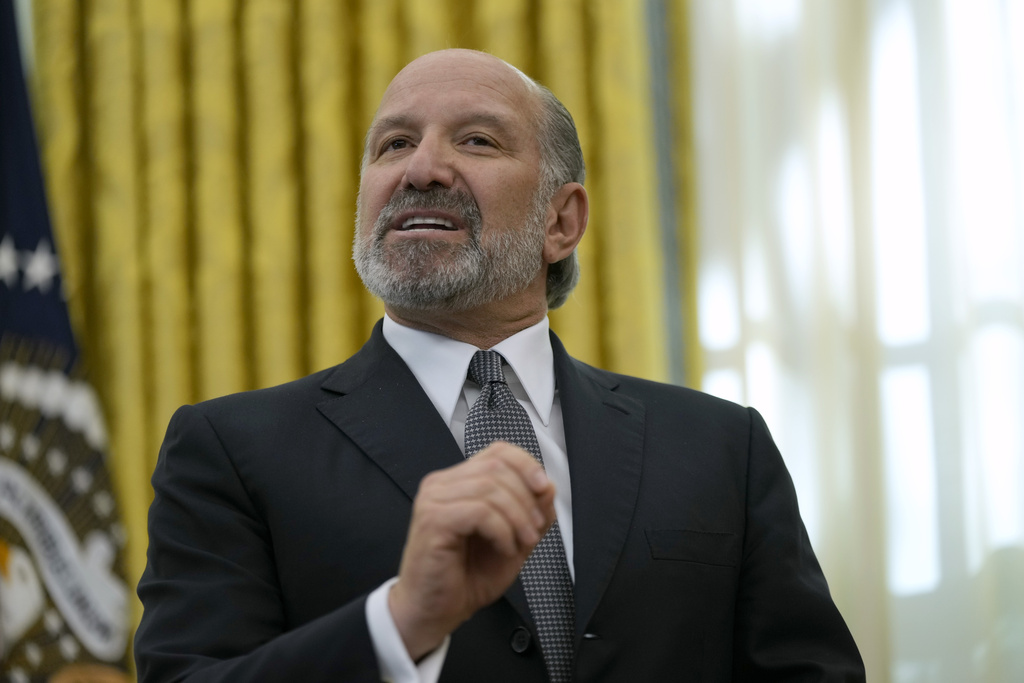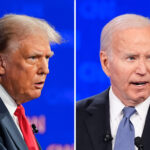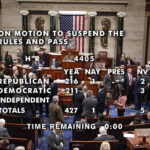Lutnick Projects $50B Monthly Revenue from Sweeping New Tariffs/ Newslooks/ WASHINGTON/ J. Mansour/ Morning Edition/ Commerce Secretary Howard Lutnick projects U.S. monthly tariff revenue may soon reach $50 billion as new levies roll out. The increase follows a 242% surge in July revenue amid expanding tariffs on tech and pharmaceuticals. Treasury Secretary Scott Bessent says trade deals are nearly complete as focus shifts to affordability.

Trump Tariffs and Trade Policy: Quick Looks
- U.S. Commerce Secretary Howard Lutnick forecasts $50B in monthly tariff revenue
- July tariff collections rose 242% year-over-year, hitting $30B
- Tariffs expanding to key sectors like semiconductors and pharmaceuticals
- Lutnick aligns projections with Trump’s long-term $1 trillion revenue goal
- Canada responds with diversified trade strategy amid U.S. tensions
- Ontario reports rising trade with EU and UK as alternative markets
- Treasury Secretary Scott Bessent says trade deals are “largely done”
- Administration now focusing on affordability and cost-of-living relief
- Eight trade agreements announced, but only two formalized so far
- China deal expires August 12, risking tariff rate increases
Deep Look
Trump Tariff Expansion Fuels Revenue Surge, Global Trade Realignment
The U.S. is poised to collect up to $50 billion per month in tariff revenue as sweeping new duties take effect, according to Commerce Secretary Howard Lutnick. In an interview with Fox Business on Thursday, Lutnick said the administration is entering a new phase of economic policy centered on protectionism and long-term revenue generation.
“I think we’re going to be heading towards $50 billion a month in tariff revenue that no one’s talked about except for the president,” Lutnick said. His remarks follow a dramatic spike in import revenue: The Treasury Department reports that the federal government collected $30 billion in tariffs last month, a 242% increase from July 2024. Since April, the total has surpassed $100 billion.
The increases are expected to continue as the U.S. expands tariffs into new sectors, including semiconductors and pharmaceuticals — industries with massive global supply chains.
“You’re going to get the semiconductors, you’re going to get pharmaceuticals, you’re going to get all sorts of additional tariff money coming in,” Lutnick said. The strategy, he argued, reflects President Trump’s broader ambition to generate as much as $1 trillion in tariff-based revenue.
Canada Responds to Tariff Pressures by Rerouting Trade
Meanwhile, America’s closest trading partner is seeking new markets. Ontario Premier Doug Ford told CNN that Canada is rapidly shifting its trade priorities in response to escalating tensions with Washington. Canadian exports now face tariffs starting at 35%, unless they comply with terms under the United States-Mexico-Canada Agreement (USMCA).
“Canada is diversifying our trade. We’re seeing a 25% increase in trade with the European Union; the UK is up by 30%,” Ford said. “As we’re diversifying and onshoring products, the American people are losing their jobs.”
While Canada looks to deepen its trade ties with Europe and the UK, Ford indicated that a meeting between Canadian Prime Minister Mark Carney and President Trump is expected soon — though no date has been announced.
Trade Policy Nears Completion, Administration Shifts to Affordability
In a related development, Treasury Secretary Scott Bessent said Thursday that the Trump administration is nearly finished finalizing a series of new trade agreements. Speaking to MSNBC, Bessent said the policy focus will now shift toward tackling the cost-of-living crisis in the U.S.
“The trade deals are largely done, and now we can really hone in on the affordability,” he said.
Bessent outlined next steps, including actions to improve housing access, reduce student loan burdens, and lower overall living expenses. “The first step in easing the affordability crisis was to bring down inflation,” Bessent added, linking recent economic stabilization to tariff-driven protectionism.
Eight Deals Announced, But Few Finalized
Over the past five months, the Trump administration has announced eight separate trade agreements. However, only two — one with the United Kingdom and one with China — have been finalized. The U.S.-China agreement, which lowered mutual tariffs, is set to expire on August 12 unless both sides renew or renegotiate.
Should the China deal lapse, tariffs between the two countries could spike again, threatening renewed strain on global supply chains and consumer prices.
Most of the announced trade deals include provisions requiring foreign governments to increase their purchases of American products. These range from defense systems and agricultural exports to cars, energy supplies, and Boeing aircraft. Additionally, the deals call for hundreds of billions of dollars in direct investment into U.S. businesses.
However, questions remain regarding the implementation and mutual understanding of the terms. Some partner nations have expressed reservations, particularly around quotas, subsidies, and domestic industry protections included in the U.S. proposals.
A New Era of Economic Nationalism
The combination of aggressive tariff policy, shifting trade alliances, and affordability-focused domestic measures marks a significant realignment in U.S. economic strategy under Trump’s second term. The administration’s bet is that tariffs will serve both as a revenue stream and a leverage tool to secure favorable global deals — even at the risk of market instability.
In contrast to previous decades, where trade liberalization and global integration were emphasized, the current approach embraces economic nationalism. Whether it will deliver long-term benefits or heighten geopolitical tensions remains to be seen.







